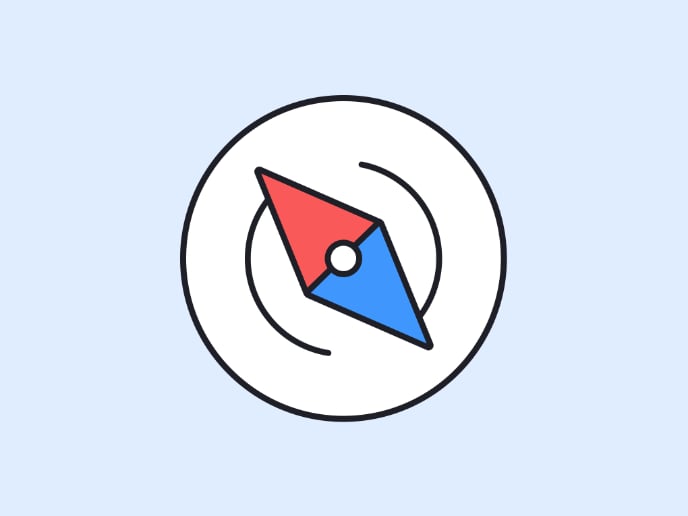A Practical Guide to Coaching Designers - Part 2
Explore advanced coaching techniques like CIGAR and FUEL models. Transform leadership with data-driven coaching to manage your design team.
Welcome to the second part of our series on design leadership. In the first part, we explored the concept of servant leadership and introduced powerful coaching models like GROW and OSCAR. Now, let's dive deeper into advanced coaching techniques and strategies to elevate your design team's performance.
More Impactful Coaching Models for Designers
Continuing our exploration of coaching models, let's look at two more powerful frameworks that can transform your coaching sessions into innovative design sprints for personal and professional growth: CIGAR and FUEL.
CIGAR Model
In the world of design, we often talk about the gap between the current user experience and the ideal one. The CIGAR model is like a blueprint for bridging that gap, not just in design projects, but in a designer's professional growth.
Think of CIGAR as your architectural plan for success:
- Current reality
- Ideal
- Gaps
- Action
- Review
Let's explore how this model can transform your coaching sessions into strategic design thinking workshops.
Step 1: Current Reality
Just as we begin any design project with user research, we start by understanding the designer's current reality. This is about creating a detailed sketch of where they are now.
Use these questions to help your designer illustrate their current state:
- If we were to create a user persona of you as a designer right now, what would it look like?
- What are the key features of your current design process?
- If your current skill set was a design toolkit, what tools would it contain?
- How would you visualize your current challenges if they were user pain points?
- If we mapped your current workflow, where are the bottlenecks?
Step 2: Ideal Reality
Now, let's switch to blue-sky thinking. This is where we envision the ideal future state, much like creating a vision board for a dream project.
Guide your designer's imagination with these questions:
- If you were to design the perfect version of your professional self, what would it look like?
- How would your ideal design process flow?
- What new 'features' would you have as a designer in this ideal state?
- If your future self had a portfolio, what would be the standout pieces?
- How would clients or teammates describe this ideal version of you?
Step 3: Gaps
This is where we overlay the current reality with the ideal future to identify the gaps. It's like creating a comparison chart between the current user experience and the desired one.
Help your designer spot the gaps with these questions:
- If we created a Venn diagram of your current and ideal states, what would be in the non-overlapping areas?
- What skills or knowledge are missing from your current toolkit?
- If these gaps were usability issues in a product, how would you prioritize fixing them?
- What assumptions or mental models might be creating these gaps?
- If we visualized your journey from current to ideal as a roadmap, where are the missing bridges?
Step 4: Action
Now that we've identified the gaps, it's time to design solutions. This is like moving from wireframes to a working prototype.
Encourage action with these questions:
- If we were to create a sprint plan to bridge these gaps, what would be the first task?
- How can we apply design thinking principles to overcome these challenges?
- What if we treated your growth as an agile project? What would be in the first iteration?
- If you were to design a habit tracker for your growth, what daily actions would it include?
- How can we gamify your action plan to make it more engaging and sticky?
Step 5: Review
Just as we wouldn't launch a product without user testing, we need to continuously review and refine our approach.
Guide the review process with these questions:
- If we were to create analytics for your progress, what metrics would we track?
- How has your 'user experience' as a designer improved since implementing these actions?
- What unexpected 'features' have emerged in your professional growth?
- If we were to pitch your progress to a panel of design leaders, what would be our key wins?
- How can we incorporate these learnings into the next iteration of your growth plan?
By reframing the CIGAR model through a design lens, you're not just coaching—you're engaging in a collaborative design process for professional growth. This approach turns each session into a strategic workshop, focused on bridging the gap between the current reality and the ideal future state of your designer.
FUEL Model
In the world of design, we often talk about the spark that ignites creativity. The FUEL model is like a designer's toolkit for kindling that spark, not just in projects, but in personal and professional growth.
Think of FUEL as your design thinking process for coaching:
- Frame the conversation
- Understand the current state
- Explore the desired state
- Lay out a success plan
Let's dive into how this model can transform your coaching sessions into innovative design sprints.
Step 1: Frame the conversation
Just as every great design project starts with a clear brief, we begin by framing the conversation. This sets the context and goals for your coaching session.
Use these questions to help your designer frame the conversation:
- If this coaching session were a design project, what would the brief look like?
- What are the key objectives we want to achieve in this session?
- If we were to create a mission statement for your growth, what would it be?
- How might we visualize the scope of what we want to accomplish today?
- If this conversation had a user persona, who would it be designed for?
Step 2: Understand the current state
Now, let's dive deep into understanding the current state. This is akin to the user research phase in a design project.
Guide your designer's self-reflection with these questions:
- If we were to create a journey map of your design career so far, what would it look like?
- What are the pain points in your current design process or skill set?
- If your current state was a product, what features would need improving?
- How would you visualize your strengths and weaknesses if they were a skill tree in a game?
- What user feedback have you received about your work or process recently?
Step 3: Explore the desired state
This is where we let creativity flow. Like in a design thinking workshop, we explore multiple possibilities for the desired future state.
Spark exploration with these questions:
- If you had a magic wand to transform your design skills, what would you create?
- How might we apply biomimicry to your professional growth? What natural processes could inspire your evolution?
- If your desired state was a mood board, what images, colors, and textures would it include?
- What if we reimagined your skill set as a superhero's powers? What new abilities would you have?
- How can we cross-pollinate ideas from other design disciplines to enrich your desired state?
Step 4: Lay out a success plan
Now it's time to move from ideas to action. This is like creating a prototype or MVP (Minimum Viable Product) for your growth plan.
Encourage concrete planning with these questions:
- If we were to create a roadmap for your growth, what would be the key milestones?
- How can we apply agile principles to your learning process?
- What if we designed a habit-forming app for your skill development? What would be the key features?
- If your action plan was a user interface, how would we ensure it's intuitive and engaging?
- How might we gamify your growth journey to maintain motivation?
By reframing the FUEL model through a design lens, you're not just coaching—you're facilitating a design thinking process for personal and professional growth. This approach turns each session into an innovative workshop, focused on igniting creativity and fueling continuous improvement in your designer's journey.
How to Nail Your Coaching Efforts
In the world of design, we often talk about creating seamless, intuitive user experiences. But what if we applied those same principles to our coaching efforts? Let's explore how to design the ultimate coaching experience for your team, turning your coaching sessions into well-crafted, data-driven design sprints for professional growth.
Step 1: Prototype Your Team's Skill Map
Just as we create user journey maps to understand our users, we need to map out where our team stands. But let's face it, traditional skill mapping can be as clunky as a website from the 90s.
Here's how Uxcel Teams transforms this process into a sleek, automated dashboard:
- Comprehensive Skill Visualization: Imagine having a real-time graph of your team's capabilities across 72 design skills and 6 skill categories. It's like having a living, breathing design system of your team's talents.
- Precision Skill Targeting: Use this data to pinpoint strengths and areas for improvement with the accuracy of a well-calibrated design tool.
- Personalized Learning Paths: Craft bespoke learning journeys for each designer, as tailored as a custom UI for a specific user persona.
- Progress Tracking: Monitor skill evolution over time, like watching your product's user engagement metrics steadily climb.
All of this happens automatically, freeing you up to focus on what really matters - nurturing your team's growth.
Step 2: Design Your Check-in Cadence
Think of your check-in meetings as user testing sessions for your team's professional development. The frequency should be as carefully considered as the intervals between product iterations.
Ask yourself:
- If each designer's growth was a product release cycle, what would be the optimal sprint length?
- How can we apply agile methodologies to our check-in frequency?
- What if we created a heat map of each designer's progress? How would that inform our meeting cadence?
Remember, the perfect check-in schedule is as personalized as a well-crafted user experience.
Step 3: Let Data Tell the Story
In UX design, we let user data guide our decisions. Apply the same principle to your coaching:
- Before: Run a Uxcel Assessment as your initial user research. It's like creating a benchmark usability study for each designer's skills.
- During: Use this data to craft targeted 'feature improvements' in their skill set.
- After: Re-run the assessment to measure the impact, just as you would conduct post-release user testing.
This data-driven approach turns your coaching sessions into strategic design sprints for skill enhancement.
Step 4: Visualize Progress
Great designers know that showing is more powerful than telling. Apply this principle to your coaching:
- Create a Dashboard: Use the data from Uxcel Teams to design a personalized growth dashboard for each team member. It's like creating a custom analytics page that tracks their professional 'user journey'.
- Celebrate Wins: Use this visual data to showcase wins to stakeholders. It's like presenting a successful A/B test result that proves the value of your design decisions.
- Gamify Growth: Consider turning progress into a visually engaging experience. Could you design a team 'skill tree' that grows as your designers level up?
Remember, as a design leader, you're not just managing a team - you're designing an experience that nurtures growth, celebrates progress, and turns data into compelling stories of professional evolution.
By approaching your coaching efforts with a designer's mindset, you're not just developing skills - you're crafting an immersive, data-driven experience that turns professional growth into a beautifully designed journey. Now that's what we call user-centered leadership!
Designing the Future of Leadership
As we've journeyed through the landscape of coaching designers, we've reimagined leadership as a creative act, transforming coaching models into design sprints for personal and professional growth. By embracing servant leadership, mastering powerful coaching models, and leveraging data-driven insights, you're not just managing a team -- you're architecting an ecosystem of innovation and continuous improvement.
Remember, great design leaders don't just create products; they craft experiences, shape minds, and ultimately, design the future of our industry.
Conclusion
This two-part series has provided you with a comprehensive toolkit for design leadership. From the foundations of servant leadership to advanced coaching models and practical strategies, you now have the resources to transform your leadership approach. Continuously refine your approach, stay curious, and always keep your team's growth at the center of your leadership design.
Topics
Share
You might also like

Breaking into Product Management Through Paths Less Traveled

A Practical Guide to Coaching Designers - Part 1

How To Celebrate Failures With Your UX Team
Popular Courses

Leadership Mastery

Workshop Facilitation









